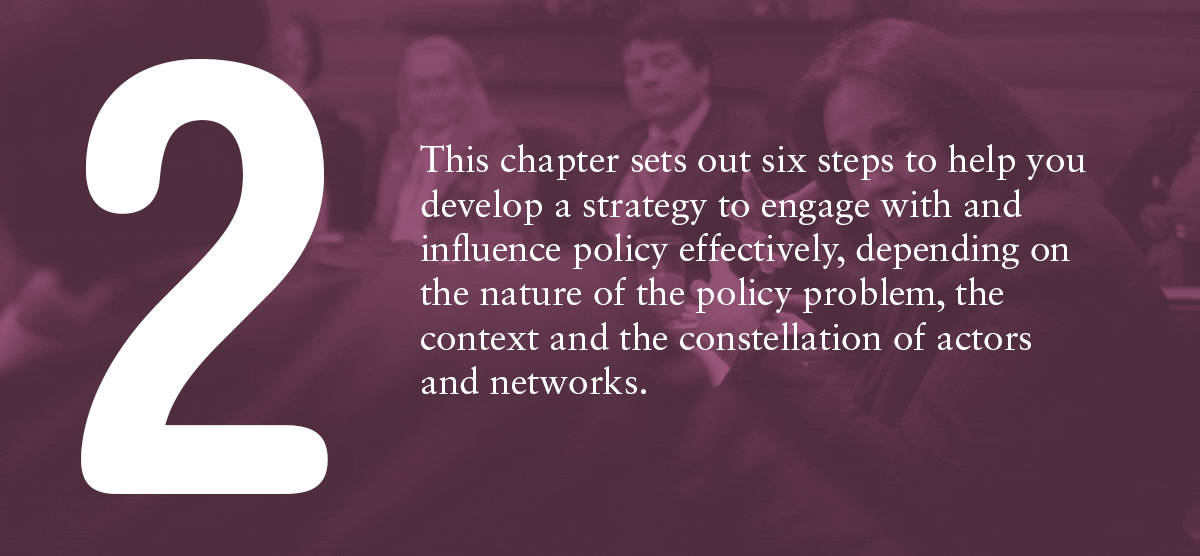
Ajoy Datta, ODI Research Fellow and co-author of the of this guide, introduces this chapter.
At a minimum, you will know what the policy problem is you are working on: you may have done a good deal of work already to understand it, even if you did not use ROMA to diagnose the problem. Either way, as you work through this chapter, you may find you need to refer back to Chapter 1 to ensure you understand the root causes, stakeholder interests and influences, complexity and uncertainty and systemic factors.
The steps described in this chapter are as follows:
2.1 Identify your policy influence objective
Formulate a clear initial objective for your engagement strategy. This is likely to change as you monitor, evaluate and learn from the implementation process. But in order to assess how you allocate resources and begin to develop a strategy, you need an objective. The previous chapter demonstrated focusing techniques to ensure your influencing objective will get to the root of an issue within a nuanced understanding of what the problem is and why it persists. Read more
2.2 Develop a set of realistic, stakeholder-focused outcomes
Develop a realistic set of stakeholder-focused outcomes to in turn help set the framing for the M&E strategy that is the focus of Chapter 3. Read more
2.3 Develop a theory of how to facilitate change
Extrapolate from the analysis of the political context and the level of complexity in order to develop one or more hypotheses about how such outcomes are likely to come about, that is, a change theory. On the basis of this change theory, a framework is then used for Step 4 Read more
2.4 Develop your communications strategy
Select specific activities to be undertaken by you and your partners to ensure you are able to engage with your target stakeholders in the most appropriate way to help bring about your objective. This includes thinking about communication activities to reach your audience and writing a communications strategy. Read more
2.5 Identify resources and capacity to implement your activities
Highlight capacity and resources and how you might carry out the process of developing your engagement strategy. Read more
2.6 Write your engagement strategy
You should now be able to begin to write your full engagement strategy. Read more
2.7 Summary
Here summarised are the various tools and activities, along with their relevant step number. Read more
2.8 Case study: putting ROMA into practice in Zambia
The World Vision team in Zambia wanted to make better use of their work at community level to inform policy. They analysed the context and stakeholders, then used aspects of the ROMA process, including identifying an objective, identifying outcomes including developing progress markers, generating entry points to intervene (strategy development) and assessing internal capacity to do so.
Read more

